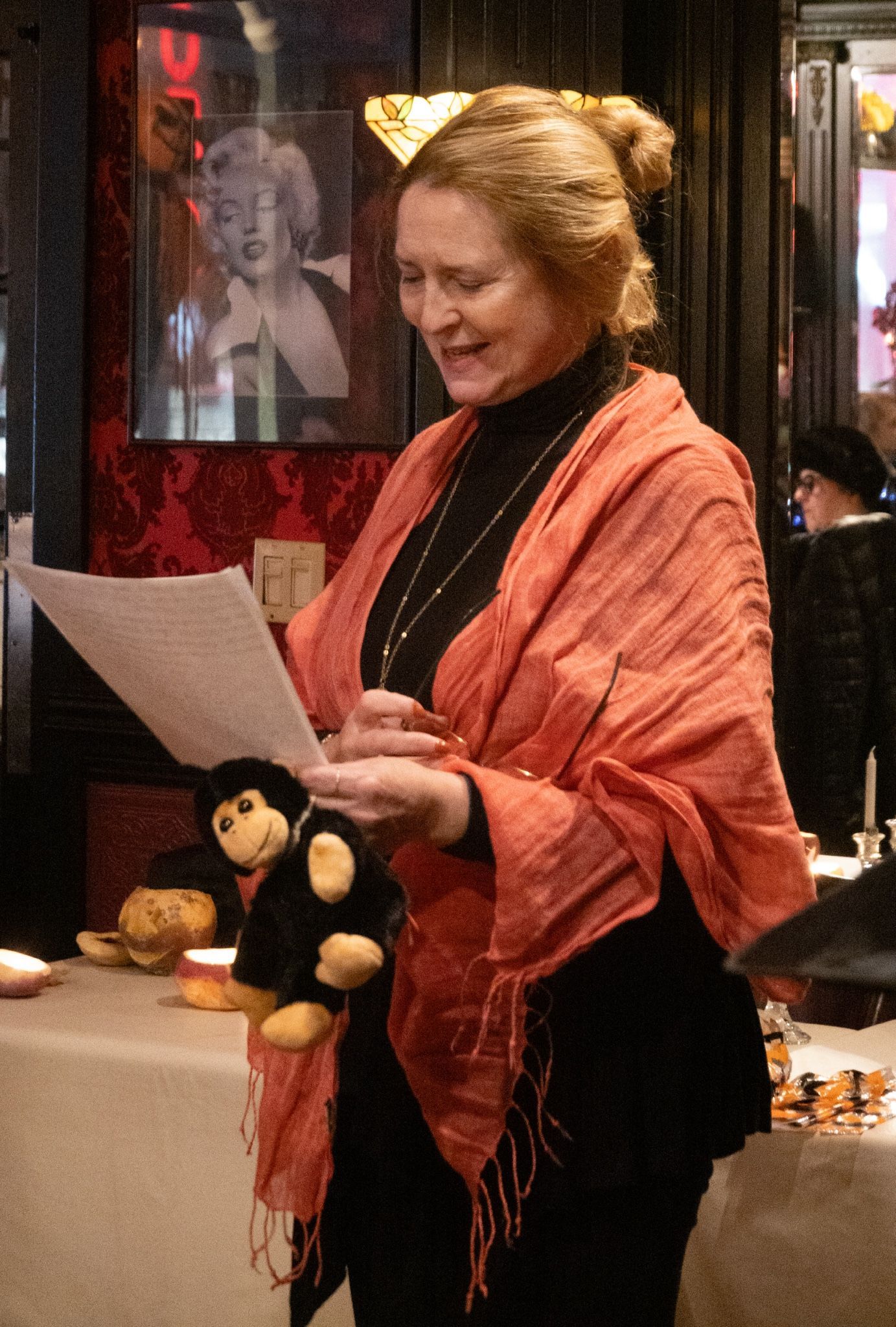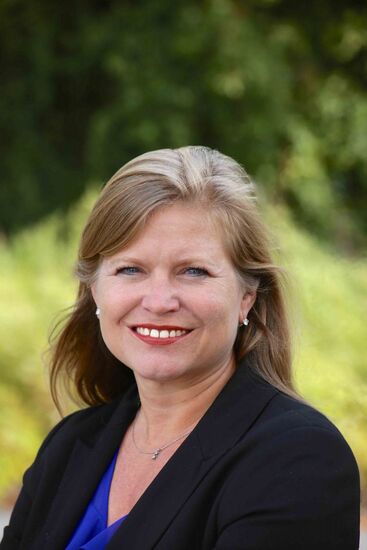Samhain, the Celtic New Year, is our favorite holiday.
Back when I taught Irish language classes, I would challenge my students to find a character from Irish history or mythology and invite them to speak cúpla focal - a few words in Irish about their chosen spirit. Our Samhain celebration morphed into an evening dinner tradition. Later, I started a Nollaig na mBan group to celebrate women’s lives. Now we observe the four major Celtic fire festivals and raise money for a charity while we’re at it. This year, we donated to the National Wildlife Federation.
For this article I will cover the traditions of Samhain and a couple of the ghosts from Ancient Ireland who haunted our recent Samhain celebration. Karen Daly will tell you below all about several well-known literary spirits who joined us.

Alisoun Price.
In ancient Ireland, at Samhain, the veil between the worlds of the living and the dead was believed to blur, allowing spirits to roam freely. Well, roam they did at our marvelous celebration on Oct. 31 at the Playwright Tavern’s party room in the Theatre District.
We hoped for positive messages to give ourselves a break from today’s headlines, choosing the theme “Inspirational Souls from Literature and Nature.” Two talented musicians, Mary Courtney on guitar, vocals and bodhrán, and Sheila Maguire on fiddle, set the tone. Playing and singing Irish tunes, they lifted our spirits and reminded us that Samhain is indeed a Celtic holiday.
Learning the true story of a pumpkin Jack-o-Lantern was the perfect way to begin the night. Alisoun Price reminded us that Irish immigrants brought the tradition to America, as pumpkins were easier to carve than the traditional turnips. Some say the Jack-o-lantern keeps evil spirits at bay; others see it as a welcome light for returning spirits. So, whether a warning or a guide, the pumpkin is a reminder that stories may travel in the hollow of a humble root.
Speaking of tradition, Pat Mangan’s witch crossed over to this world to correct misconceptions about Irish witches. Unlike England and Scotland, where hundreds of women were executed for witchcraft, Irish witches were not seen as evil. Instead, they were appreciated as wise women and healers who used herbs, charms, and blessings to help their neighbors. We women of Nollaig na mBan appreciated this idea!
In ancient Ireland, it was the poets and bards who carried the news. They were the social media of their day. Our own Nollaig na mBan poet and photographer Margaret McCarthy presented Leabharcham, a satirist, poet, and mythical wise woman who raised Deirdre. As Margaret suggests, we need to believe as Leabharcham did that we have the ability to rebalance and heal our world.
Another ancient spirit presence was the Pirate Queen Gráine Mhaol also known as Grace O’Malley. Folklore has it that as a young girl, Gráine wished to go on a trading expedition with her father. When told she could not because her long hair would catch in the ship's ropes, she cut off her hair to embarrass her father into taking her.This earned her the nickname "Gráinne Mhaol" (from ‘maol’ meaning bald. Her spirit was presented by Siobhán Regan.
Karen Daly writes --
Vera Wrenn personified a more demure young woman, from the old Irish love ballad The Spinning Wheel, in her a capella rendition.
“Merrily, cheerily, noiselessly whirring….
Trills the sweet voice of the young maiden singing.”
More poetry and song filled the night. Maura Mulligan bridged the gap between ancient and modern Ireland when she personified a famous honeybee from Yeats’s “bee-loud glade” in “The Lake Isle of Innisfree.” And we recited right along with her.
Allyce Fucigna actually wore her poem. She chose to be the sea change from Seamus Heaney’s “The Cure at Troy” that “…longed-for tidal wave of justice…” The verse was lettered and hand-painted on her muslin dress, a gift from Allyce’s assistant teachers.
Marie Bridget Dundon, who has many distinguished acting credits, performed Lady Gregory’s lyrical translation of an 8th-century Irish poem, “Donal Óg.”
Mary Fee’s spot-on spirit was the revered Brooklyn-born Irish poet John Montague, whose poem “Samhain” she performed.

Maura Mulligan.
Along with spirits who told their stories, imaginatively costumed silent ghosts joined the party. “Goibniú,” the Celtic god of craft and hospitality, insisted that everyone join in the fun. Following Maura’s bee from Innisfree, we had a butterfly, a spider, a frog and a famous elephant (Babar).
Some of us drew upon more contemporary inspirations: Mary McIntyre, complete with her own chimp, commemorated Jane Goodall, the great conservationist and naturalist who studied the chimpanzees in East Africa.
Sheila Houlihan called upon the spirit of one of her most admired writers, Nuala O’Faolain, the Irish memoirist and novelist who died in 2008. Sheila recommended the novel “The Story of Chicago May.”
Nancy Oda disguised herself as the blonde folk singer Mary Travers—she of the renowned trio, Peter, Paul and Mary. Nancy described the music’s positive impact on the culture and on her personally.
Dee Nolan portrayed Nellie Bly — born Elizabeth Cochrane — the groundbreaking investigative journalist who also went around the world in 72 days… an incredible feat in 1890.
Another intrepid traveler was introduced by Karen, the Lismore-born Dervla Murphy, who bicycled alone from the edge of Europe to India in the 1960s. Murphy published two dozen books and was considered one of the best travel writers of the 20th century.

Siobhán Regan.
We always close the night with Mary Fee’s delicious homemade Bairin Breac (barmbrack), each guest hoping to receive the piece with the hidden charms.
Our celebration of Samhain ends on a solemn but essential note, a candlelight commemoration of those who have passed this year.
And as we start our Celtic New Year, we remember to be gentle with ourselves and take guidance from the earth. Samhain was always the time when agricultural work ceased allowing the earth to rest. Happy Celtic New Year.








